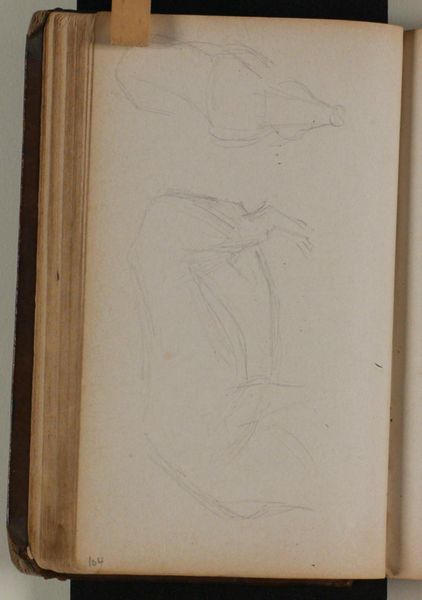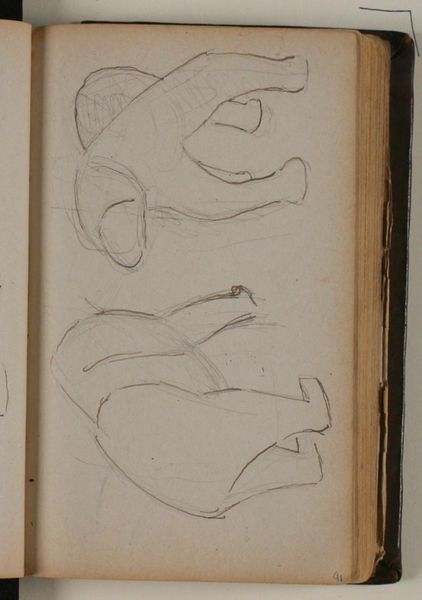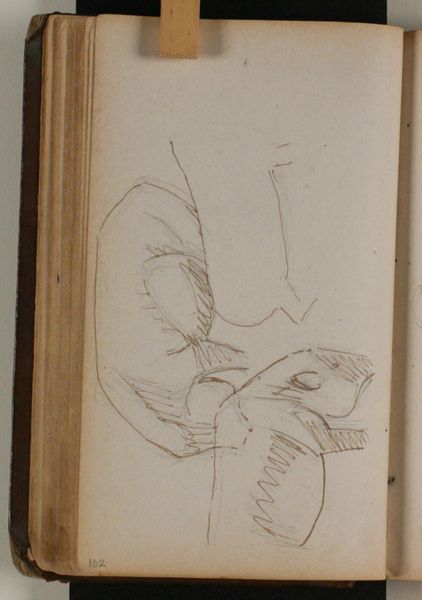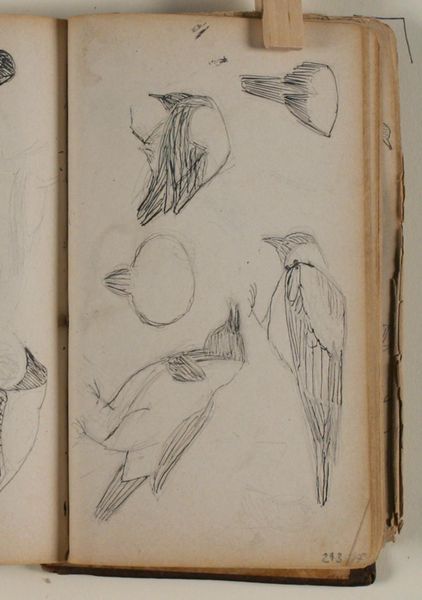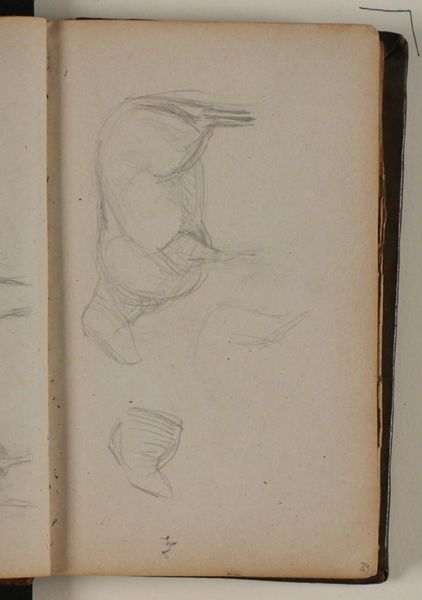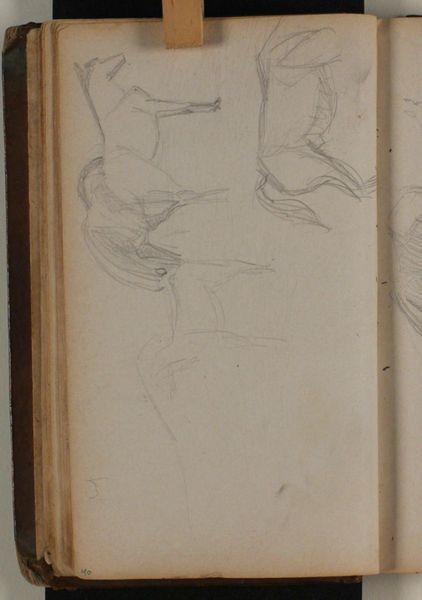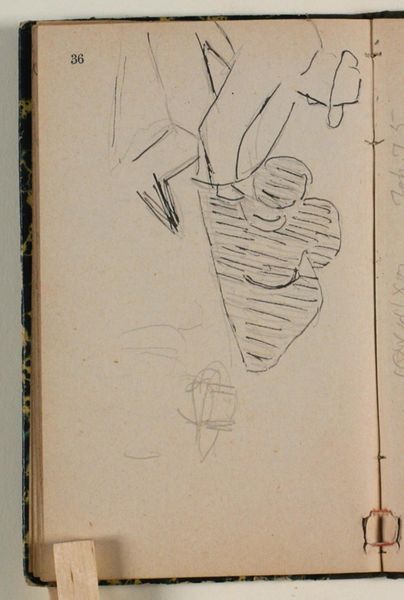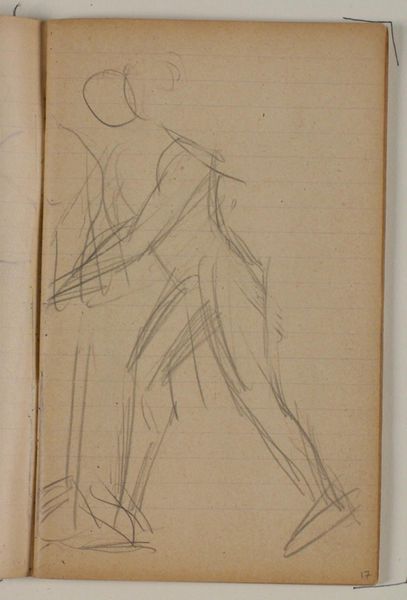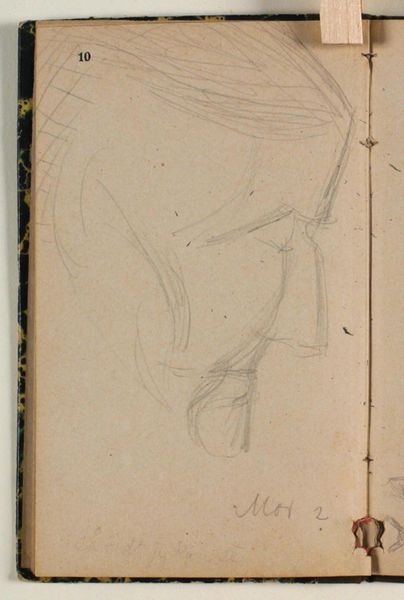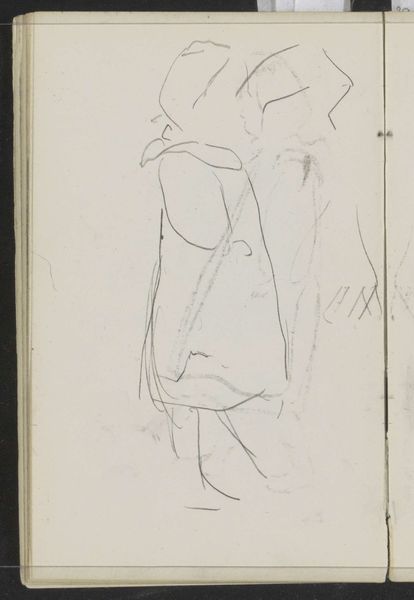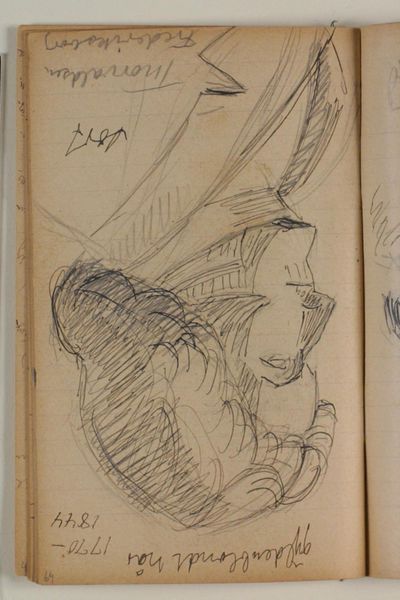
drawing, pencil
#
drawing
#
figuration
#
form
#
pencil
Editor: Here we have Niels Larsen Stevns' "Studie af isbjørn," or "Study of a Polar Bear," dated sometime between 1864 and 1941. It’s a pencil drawing. It's quite abstract, and the lines seem tentative, as if the artist is feeling out the form. What stands out to you in this work? Curator: The material quality of this sketch is compelling. Think about the pencil itself—graphite, mined and processed, shaped into a tool. Stevns uses this tool to capture the essence of another creature, also a product of specific material conditions, struggling to survive in a harsh environment. Editor: So you're saying the materials themselves—the pencil and the paper—tell a story? Curator: Precisely! Consider the availability of drawing materials in the late 19th and early 20th centuries, versus now. This was a readily accessible means of image-making for the artist, but still required resources and access. Who gets to represent the natural world, and with what tools? Editor: That's a perspective I hadn’t considered. So, the simplicity of the drawing highlights the complexities of production and access? Curator: Yes. The seeming "unfinished" quality pushes us to question artistic labor itself. Was this a preliminary sketch for a larger work? Was it ever intended to be displayed? These questions challenge traditional notions of artistic value. The very act of sketching implies observation, exploitation, or study of this magnificent animal. How are animals turned into art? What is gained and lost in the process? Editor: I see now! The materials used and how they are applied provide insight into artistic and societal values of the time. Curator: Indeed! Considering the historical context of Arctic exploration and exploitation is also very important. Editor: Thank you for the clarifying background and context. It gives a whole new depth to appreciate such a seemingly simple sketch!
Comments
No comments
Be the first to comment and join the conversation on the ultimate creative platform.


